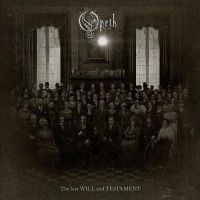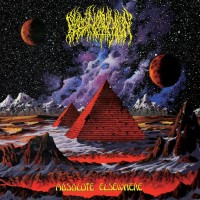Getting Into: Sigh

| Written by: | ScreamingSteelUS |
| Published: | March 23, 2016 |
The articles in this series begun by our own Baz Anderson are designed to give a brief overview of a band's entire discography, so as to provide a clear point of entry for the uninitiated. It offers a different approach from the typical review format, for the curious newcomer to a well-traveled band.
Sigh
Avant-garde black metal, everything else
Japan's premiere black metal band emerged from its nativity as kvlt as they come - corpse-painted Venom-worshippers who attracted the attention of Euronymous himself and saw their debut album released on his label, Deathlike Silence Productions. Soon shaking off the burdens of this unidirectional career path, Sigh quickly grew into a band on the run from convention and simplicity. Over the years, they have managed to seamlessly incorporate countless musical genres into each other and into their own sound, all the while maintaining an off-kilter inchoateness that, though at first the mark of the amateur, has since been shown to be purposeful and calculated. Racking up an impressive array of masterpieces, successful experiments, and guest musicians, Sigh have proven themselves time and time again to be one of the most dynamic, thoughtful, and downright inexplicable forces in metal.
--
     | Scorn Defeat (1994) Atonal by both design and circumstance, furious in its assault, and fraught with the disjuncture of many an underground black metal release, Scorn Defeat reaches for somewhere beyond its station. The ambitions of later Sigh leak through the coarse noise-screen here and there, but for the most part these songs are simply supra-average black metal songs performed in an unremarkable manner. A few songs employ some light and suspiciously musical keyboard usage, though usually as interludes; Sigh had still not determined how best to integrate outside influences. Even if they had never evolved into their unusual hybrid style, however, they could have become one of the greatest acts of the black metal scene. The ideas are clearly here, though tenuous in their execution. Standout Tracks: "Ready For The Final War," "The Knell," "At My Funeral" |
| Infidel Art (1995) Already by the second album, Sigh had become much more adventurous in their songwriting. Mirai Kawashima splashes keyboards all over the place in symphonic flourishes, classical accentuations, and sweeping atmospherics. Infidel Art bears the same brutish roughness of character as its predecessor, but it strongly tempers the raw black metal fury with a much greater sensitivity to mood and flavor. These songs meander a bit more, spend more time in softer plains, and exhibit an understanding of musical complexity that gels strangely with the stripped-down, anti-musical skeleton of black metal. The theatrics found in songs like "The Zombie Terror" foreshadow the great epics they would forge later in their career, while also making for some excellent tracks in their own right. Infidel Art is still a very rough, loose album that can be easily off-putting to listeners, but as an early example of the experimental potential of black metal, the album has few equals. Standout Tracks: "Izuna," "The Zombie Terror," "The Last Elegy" |      |
     | Ghastly Funeral TheatreGhastly Funeral Theatre [EP][/url] (1997) While these "Getting Into" articles tend to focus solely on full-length studio releases, Sigh have a habit of spelling out their name with their album titles (using the first letter of the name of each release). The first time around, Sigh included the Ghastly Funeral Theatre EP in the acronym, which acknowledgement necessitates the EP's inclusion here (as does the phenomenal musical odyssey offered in these scant 23 minutes). Ghastly Funeral Theatre bridges the gap between Infidel Art and Hail Horror Hail, preserving the coarse and unsettling texture of the former, but adapting the Sigh sound to increasingly progressive pastures. While black metal remains observable in the vocals and primary instrumental tones, the song structures themselves (as well as the keyboards and other ancillary instruments) stray into bizarre amalgamations of traditional heavy metal, doom, and horror movie soundtracks. Standout Tracks: "Doman Seman," "Shikigami," "Shingontachikawa" |
| Hail Horror Hail (1997) "Hail Horror Hail" leaps from the crypt with no warning, a truly macabre rock'n'roll mirage layered over a pulsing, deathly rasp with a romantic twist halfway through. By crudely nailing together "divers and sundry elements" that would seem to negate or cripple each other in any other context, Sigh achieved their first true masterpiece in the form of Hail Horror Hail. The phrase "blackened neoclassical doom'n'roll" may sound like nonsense, especially when interspersed with jazzy, orchestral, and occasionally horrifying interludes, but when illustrated musically, the concept takes on an unprecedented cohesiveness. More expertly than ever Mirai Kawashima integrates his myriad keyboards, many of which can only be described as the aural equivalent of The X-Files. At the same time Shinichi Ishikawa has finally come into his own as a lead guitarist; his contributions now share much more of the stage with other lines of melody, but he plays them much more tastefully and memorably. Boasting the very first Sigh songs that could be considered "catchy," while conversely marking one of the band's progressive high points, Hail Horror Hail remains an integral part of any discussion of avant-gardism in metal. Standout Tracks: "Hail Horror Hail," "Curse Of Izanagi," "12 Souls," "Seed Of Eternity" |       |
      | Scenario IV: Dread Dreams (1999) Scenario IV: Dread Dreams shears away some of the more obscenely off-kilter digressions of Hail Horror Hail, replacing the swamps of keyed undergrowth with loud, bloody guitars - almost a return to the black metal origins of Sigh, but with much more interest in subtler musicality. Ishikawa celebrates his return to prominence with his liveliest and most complex riffs up to this point, while Kawashima shifts his focus from enveloping soundscapes to Old-West-saloon jaunts and funky extraterrestrialisms. Sigh continue to branch out further into other genres, incorporating elements of country, funk, and some instances of what can only be described as a lurid disco of the damned. The album also features memorable backing vocals from Damian Montgomery of Ritual Carnage and Chie Kouno. Standout Tracks: "Infernal Cries," "Diabolic Suicide," "Imprisoned" |
| Imaginary Sonicscape (2001) Only the phrase "Imaginary Sonicscape" accurately describes the grotesquely surreal wonderland Sigh explore with their magnum opus. Imaginary Sonicscape packs up the increasingly-ambitious, show-stopping production that Sigh had been ramping up and takes it on the road, boasting Sigh's most memorable performances to date. The album functions differently from its predecessors, with the emphasis more on tight, distinctive songs than permeating atmospheres, and with much more professional production, the diagonal shifts in tone, mood, and genre become all the more dynamic and engaging. Sigh have truly outdone themselves, voyaging from dreamlike synth odysseys to happily-blackened surf'n'lounge to what essentially constitutes a dub reggae breakdown in "Scarlet Dream." Guitar riffs mercilessly enforce the groove with weapons-grade hooks; the keyboards play the chameleon, encompassing any and every genre where necessary. Kawashima's credits on this album include "playing" the Speak & Spell and a giggling baby landslide. It seems that this band has no boundaries whatsoever. Standout Tracks: "Scarlet Dream," "Nietzschean Conspiracy," "Voices," "Ecstatic Transformation" | 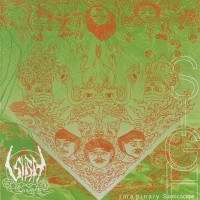      |
      | Gallows Gallery (2005) Though from the outset the guitars sound heavily sunk into the obtuse fuzz of blackened stoner, Gallows Gallery generally flirts with much more upbeat styles. The keyboards fall back from the front lines to a more standardized rock'n'roll mindset, allowing saxophones to take the spotlight occasionally, while strenuous drums push Sigh to new and intense speeds. Kawashima employs mostly clean vocals, which make the songs sound all the more psychedelically ghoulish; the unusual vocals and brighter, more melodic guitars have drawn comparisons to power metal. Rebelling against the thoroughly destabilized laboratories of sound in which Sigh had dwelt on the last few records, Gallows Gallery maintains a much more unified spirit throughout its running time - as well as a much more conventional baseline approach, if not one that Sigh had touched upon before. While not a concept album, Mirai Kawashima has described the album as one in which themes and musical tropes recur in order to give the work a sense of interconnectedness, and the songs do indeed carry a complementary mood. Standout Tracks: "Pale Monument," "In A Drowse," "Confession To Be Buried," "Messiahplan" Note: A remaster of Gallows Gallery was released in 2007, featuring a blue cover rather than orange, some minor alterations in song lengths, and several bonus tracks. The original issue was extremely poorly-produced, diminishing both the impact of the music and the positive reception from fans and Century Media. The reissue sounds much stronger, and is easily the better version; subsequently, it is also more readily available than the original. Metal Storm typically does not treat reissues as distinct from original albums, but this particular case warranted a staff review at the time of its release, and thus Gallows Gallery [Reissue] counts as its own discrete entity for these purposes. |
| Hangman's Hymn: Musikalische Exequien (2007) Heavily Latinized both musically and lyrically, Hangman's Hymn violently tears away from the blueprints of its forebears and calls forth a hulking, speed-crazed, volcanically heavy Sigh. Shunning the dazed hypnosis of Gallows Gallery, as well as the genre-spanning eclecticism of Imaginary Sonicscape, Hangman's Hymn spends very little time on extraneous elements. While Kawashima still shapes his synthscapes and the occasional avant-garde elements still shine through, this album offers, more than anything, blackened symphonic thrash (symphonic in the classical sense, rather than the Nightwish sense). The album economizes with sound, featuring Sigh's most compact songs to date and scaling back the layers on each composition, but enough components remain to make the album sound grandiose and threatening. Standout Tracks: "Me-Devil," "Inked In Blood," "Finale: Hangman's Hymn/In Paradisum/Das Ende" | 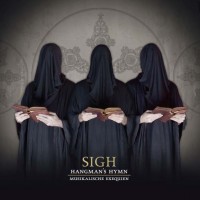      |
     | Scenes From Hell (2010) After the brazen machinations of Hangman's Hymn, Scenes From Hell feels subdued, even lackluster; a basis in symphonic black/thrash carries over, but Sigh also seeks a return to more experimental modes of thinking, and the two mentalities sometimes clash. Certainly the less-professional production and occasional decreased pace compare unfavorably to Hangman's Hymn, but Sigh have never made any real missteps, and Scenes From Hell offers its own diverse array of intriguing compositions. The album concentrates heavily on atmosphere, coming off more like a horror movie soundtrack than a single-minded packaging of heavy metal songs. Scenes From Hell also features the debut of vocalist/saxophonist Dr. Mikannibal, who has since become one of Sigh's most outstanding and unique elements (and Mrs. Kawashima). Standout Tracks: "Scenes From Hell," "The Red Funeral," "Musica In Tempora Belli," "Vanitas" |
| In Somniphobia (2012) In Somniphobia takes notes from both Gallows Gallery and Scenes From Hell, somehow managing to make fast-paced, melody-driven songs sound as trance-like as the meandering, aberrant dirges. The lead-instrument-pendulum continues to swing back, with the guitars dominating the songs and keyboards filling out backgrounds and adding flavorful accentuations. Meanwhile, Dr. Mikannibal's role has expanded, balancing out Kawashima vocally and Ishikawa instrumentally to take Sigh yet further into undiscovered country. In some ways, In Somniphobia serves as a career retrospective for Sigh, with some songs recalling moments from the album's variegated predecessors - but the album is, unfortunately, one of Sigh's most inconsistent releases. Sigh have never failed to deliver excellence, but In Somniphobia tends to get lost in itself on occasion. Standout Tracks: "The Transfiguration Fear," "Somniphobia," "Amongst The Phantoms Of Abandoned Tumbrils" |      |
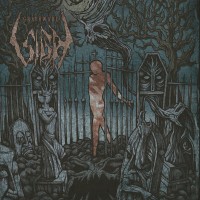      | Graveward (2015) Though they have always been chameleons, able to adapt to any number of sounds and styles, Sigh sound more in their element on Graveward than they have almost anywhere else. Graveward imitates Imaginary Sonicscape in its execution, every song having a discrete personality and exploring far-flung realms of musical endeavor. Every fine detail of Graveward shines immeasurably - Dr. Mikannibal's tortured clean vocals, new addition You Oshima's blazing guitar solos, Kawashima's suspenseful synths - in order to make Graveward one of Sigh's most ambitious, unique, and personality-driven works to date. Each song is stronger than the last, and with over a hundred tracks per unit, Graveward never runs out of secrets and subtleties. Standout Tracks: "A Messenger From Tomorrow," "The Tombfiller," "The Forlorn," "Out Of The Grave" |
| Heir To Despair (2018) For all its ambition, Graveward quickly fell out of Kawashima's favor over its production and writing; Heir To Despair, completing the band's third "SIGH" tetralogy, was again an adventure for Sigh, incorporating elements of Japanese music not previously explored to any great extent. Traditional instrumentation and Japanese lyrics blend with the "familiar" unorthodox black metal foundation, benefiting still from Oshima's virtuosic and flavorful guitar work. At times taking after the heavy thrash of Hangman's Hymn, at times referring to Imaginary Sonicscape, but mostly interested in finding new ways to wring a horror film score out of a taishōgoto, a computer, and Kawashima's unique vocals, Heir To Despair is perhaps the band's most vivid and confident work of the 2010s. Standout Tracks: "Aletheia," "Heresy I: Oblivium," "Hunters Not Horned," "Hands Of The String Puller" |       |
--
Overview:
Sigh have produced a lot of albums badly, but they have never produced a bad album. Though Sigh has long since pulled away from the raw black metal of its origins, the grim coldness still informs the band's nature in a way that renders them truly inimitable. Mirai Kawashima's distinctive rasps and multitudes of synthesized armaments, now joined by Dr. Mikannibal's unsettling cries and weaponized saxophone, wrap Sigh's music in Lovecraftian levels of sublime weirdness, while drummer Junichi Harashima's supreme skills free up multi-instrumentalist Satoshi Fujinami to orchestrate the band's core. You Oshima, now taking over for the legendarily adept and insightful Shinichi Ishikawa, has already proven himself to be a master of his instrument and of the Sigh mentality. Outfitted with unmatched musicianship and an unshakeable tendency to roam into the unexplored regions of musical fusion, Sigh has blazed trails that none have yet followed them down, and with each subsequent release, they continue to re-assert their authority over the realms of the grotesque and the strange.
 | Written on 23.03.2016 by I'm the reviewer, and that means my opinion is correct. |
Comments
Comments: 24
Visited by: 227 users
| Auntie Sahar Drone Empress |
| ScreamingSteelUS Editor-in-Chief Admin |
| X-Ray Rod Skandino Staff |
| !J.O.O.E.! Account deleted |
| Overrwatcher |
| ScreamingSteelUS Editor-in-Chief Admin |
| X-Ray Rod Skandino Staff |
| MetalDoomMaster Posts: 566 |
| Bad English Tage Westerlund |
| M C Vice ex-polydactyl |
| 3rdWorld China was a neat |
| 3rdWorld China was a neat |
| M C Vice ex-polydactyl |
| Sang Dalang Abu |
| 3rdWorld China was a neat |
| strade |
| Dream Taster The Enemy Within Staff |
| ScreamingSteelUS Editor-in-Chief Admin |
| Diverge Posts: 1334 |
| RaduP CertifiedHipster Staff |
| ScreamingSteelUS Editor-in-Chief Admin |
| RaduP CertifiedHipster Staff |
| ScreamingSteelUS Editor-in-Chief Admin |
| ScreamingSteelUS Editor-in-Chief Admin |
Hits total: 10529 | This month: 27

